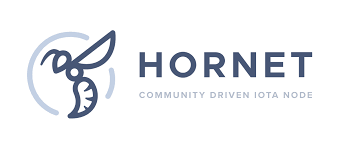Hexen, our modular synthesizer was updated to version 2.0 recently:
Here’s the version 2 release history up to the latest stable release:
< V2 .20 >
Loading last rack on startup is now an option (defaults to off).
Log Text button moved to top level menu.
Tweaked DEMO_15.
< V2 .19 >
Trying to fix rack loading hang on some devices (bad module position parse will fall back to sequential module stacking).
< V2 .18 >
Added DEMO_15.
Added new “Log Text” button in settings menu.
Fixed some underlying logging code that was found to be not totally thread safe.
< V2 .17 >
Trying to fix rack loading hang on some devices (wire bezier list functions changed).
Upgraded status now recognized when offline.
< V2 .16 >
Trying to fix startup hanging on some devices.
< V2 .15 >
Trying to fix startup hanging on some devices.
In MODULES object code, changed system scoped mutexes to app scoped object locks.
V2.14
< V2 .14 >
Double click module zooming now uses range you choose on slider.
Added loading percentage counter.
All texture atlases limited to 2048.
All graphics now use OpenGLES3.
Tweaked DEMO_13.
Tweaked DEMO_14.
< V2 .13 >
Double click module zooming now uses range you choose on slider.
Added loading percentage counter.
All texture atlases limited to 2048.
All graphics now use OpenGLES3.
Tweaked DEMO_13.
Tweaked DEMO_14.
< V2 .12 >
Improved graphics.
Added new demo (DEMO_14).
Made module textures hi-res.
UI now defaults to right handed mode on new installs.
Shaders now preloaded on boot up.
< V2 .11 >
Improved button graphics.
Added new demo (DEMO_13).
Fixed 2D theme (went invisible in V2.10).
Made rack texture resolution hi-res (again).
Various other graphics tweaks.
< V2 .10 >
Small dark text labels on LED buttons restored.
< V2 .09 >
Render speed increased with better GPU batching.
SCOPE module fixed line drawing shader (was pink and half missing).
Camera distance range reduced to prevent Z fighting when zooming.
< V2 .08 >
After adding a new module the menu system is now closed automatically.
MIDI crashes on some phones, MIDI module disabled while we find a fix.
LCD text in controls pushed forward slightly to prevent Z fighting when zooming out.
Reduced boot up time.
Main rack texture resolution increased back to 4096 square.
Added new demo (DEMO_12).
< V2 .07 >
Changed min/max android APIs to 26/33 to fix midi bluetooth crash on some devices.
Refined pinch/zoom to be smoother (still room for improvement).
< V2 .06 >
Removed location permission requirements.
Reduced minimum compatibility to Android 7.1 Nougat (API 25).
Reduced rack texture resolution to prevent crash on low RAM devices.
< V2 .03 >
Updated to Android 14 (API 34).
Offline registration.
Improved graphics.
Faster core DSP routing.
Zoom and scroll with pinch gesture.
Theme and color now separate options.
New button to quickly add module.
When adding a new module it will be placed near last touched module if possible.
When deleting a module patch cables will be added to replace the deleted module if possible.
HEX Mixer CV inputs now normalized 0…1 and multiplied with slider value (before were added).
RADIO module now always uses SSL connection over HTTPS.
![]() We recently got our site (www.SiliconDroid.com) SSL-OV certified, It involved having a local registered lawyer who knows us write an “opinion letter” proving that we are a legitimate registered company (Silicon Droid Inc.)
We recently got our site (www.SiliconDroid.com) SSL-OV certified, It involved having a local registered lawyer who knows us write an “opinion letter” proving that we are a legitimate registered company (Silicon Droid Inc.)